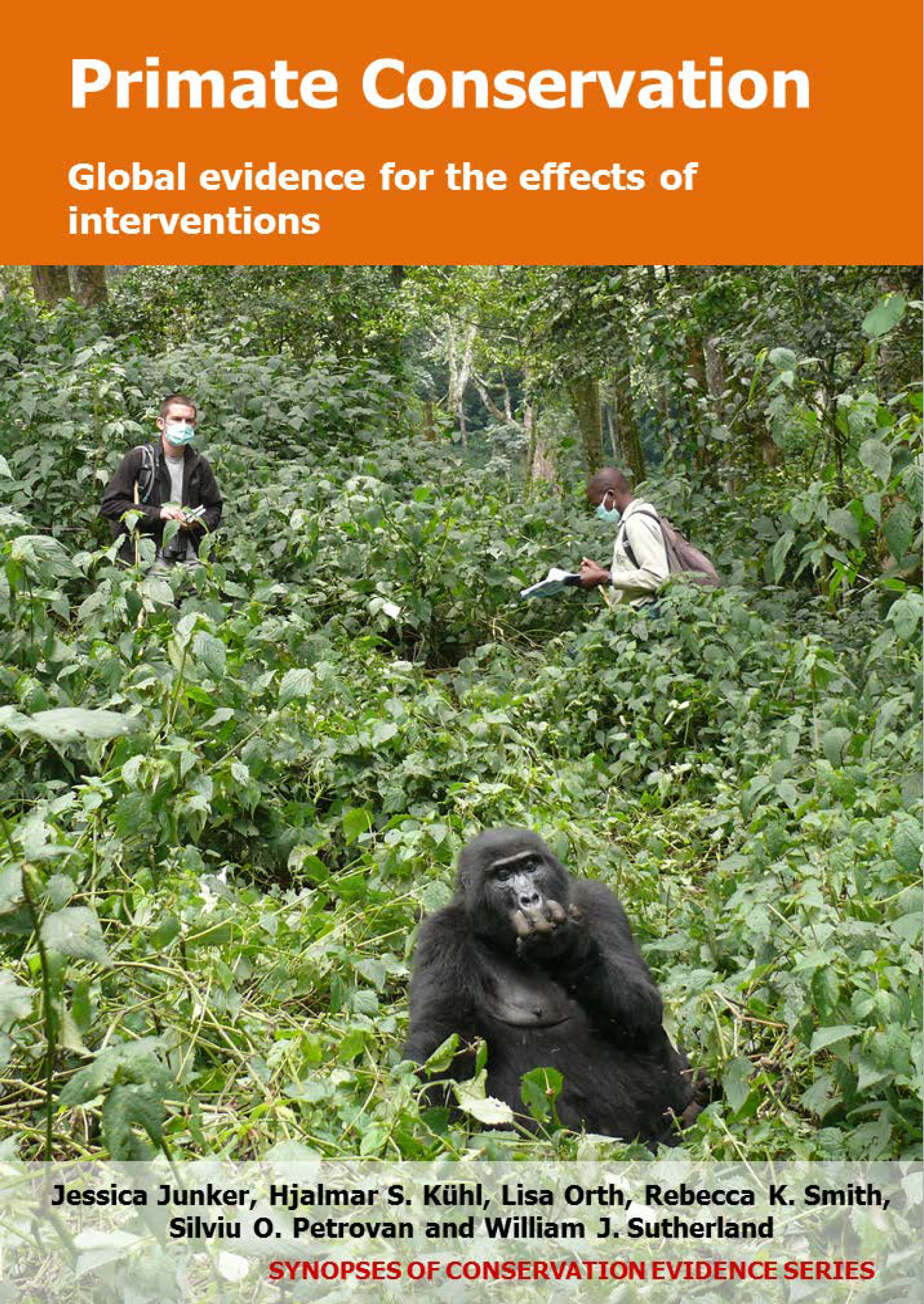Habituate primates to human presence to reduce stress from tourists/researchers etc.
-
Overall effectiveness category Unknown effectiveness (limited evidence)
-
Number of studies: 3
View assessment score
Hide assessment score
How is the evidence assessed?
-
Effectiveness
40% -
Certainty
20% -
Harms
10%
Study locations
Supporting evidence from individual studies
A before-and-after trial in 1954-1985 in a degraded rainforest in Poço das Antas Reserve, Brazil found that a translocated captive-born golden lion tamarin Leontopithecus rosalia population that was habituated to human presence along with nine other interventions, decreased by more than half (57%) within the first year post-release. However, no statistical tests were carried out. to determine whether this difference was significant. Of the 14 individuals released, seven died (50%) and two were removed and treated. Three infants were born, one of which died due to illness. Eight individuals were released as a family group and six individuals were released as pairs one month later. Tamarins spent an unknown amount of time in 15 x 4.5 x 3 m outside enclosures to acclimatize. They were fostered to facilitate survival in the wild. The reserve included natural predators. Sick or injured tamarins were captured and treated. Reintroduced tamarins were supplied with food for ten months post-release. Artificial nesting boxes, which were hollow logs provided to them during training, were also set up in the reserve. The study does not distinguish between the effects of the different interventions mentioned above.
Study and other actions testedA before-and-after trial in 2006-2007 in evergreen rainforest in Analamazaotra Special Reserve, Madagascar found that translocated black-and-white ruffed lemurs (BWRL) Varecia variegata variegata and diademed sifakas Propithecus diadema that were habituated to human presence before relocation along with other interventions, survived for at least 30 months and reproduced. No mortalities were recorded for BWRL over a 30-month period and only one diademed sifaka died from natural causes. In addition, two sets of BWRL twins (reproductive rate=57%) and seven diademed sifaka infants were born (reproductive rate=26%), the latter of which only two survived. A total of seven BWRL and 27 diademed sifakas were captured at four disturbed forest sites and released in their social units to the reserve where the species had locally gone extinct and that included natural predators. Released primates were monitored with radio-collars. Two to eight months before translocation, lemurs were darted and underwent veterinary checks. The study does not distinguish between the effects of the different interventions mentioned above.
Study and other actions testedA controlled, before-and-after study in 1967-2008 in tropical moist montane forest in Volcanoes-, Mgahinga-, and Virunga National Parks in Rwanda, Uganda, and the Democratic Republic of Congo, respectively, found that a mountain gorilla Gorilla beringei beringei population that was habituated to the presence of researchers and tourists alongside 10 other interventions, increased in size over time. Annual population growth was 4.1%, resulting in an overall population increase of 168% over the entire study period. No statistical tests were carried out to determine whether this increase was significant. As part of a long-term research project, habituation of gorilla groups started in 1967 and continued largely uninterrupted until the end of the study in 2008. Later on, an ecotourism project was implemented. Visitors/researchers had to follow strict health procedures; these included keeping a safety distance to the gorillas, wearing face-masks, spending only a limited amount of time with gorilla groups, ensuring that visitors/researchers were healthy and disinfecting visitor’s/researcher’s clothes, boots etc. The population was monitored by vets and gorillas received medical treatment if necessary and any mortality was clinically examined. The study does not distinguish between the effects of the different interventions mentioned above.
Study and other actions tested
Where has this evidence come from?
List of journals searched by synopsis
All the journals searched for all synopses
This Action forms part of the Action Synopsis:
Primate Conservation
Primate Conservation - Published 2017
Primate Synopsis





)_2023.JPG)














